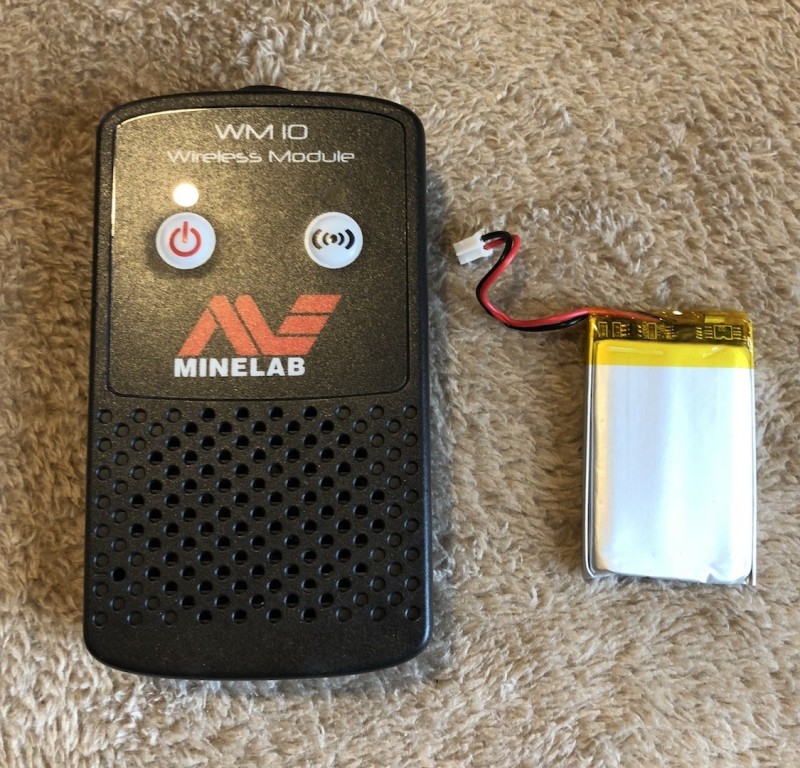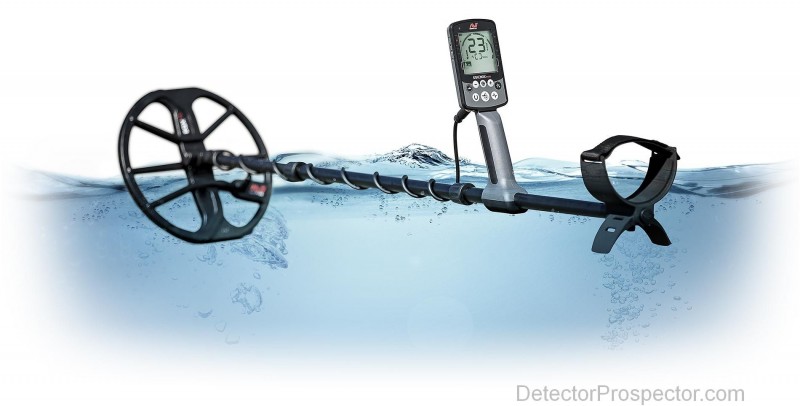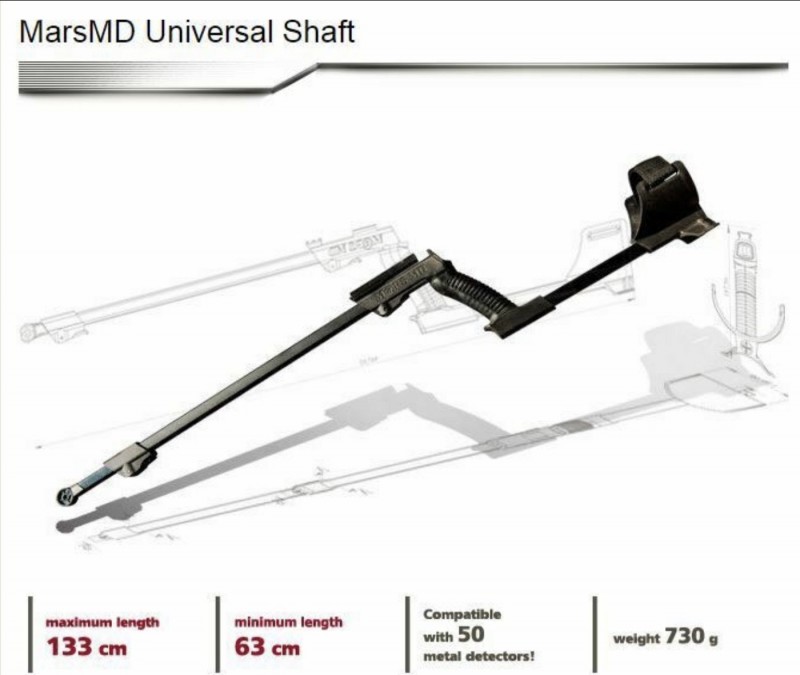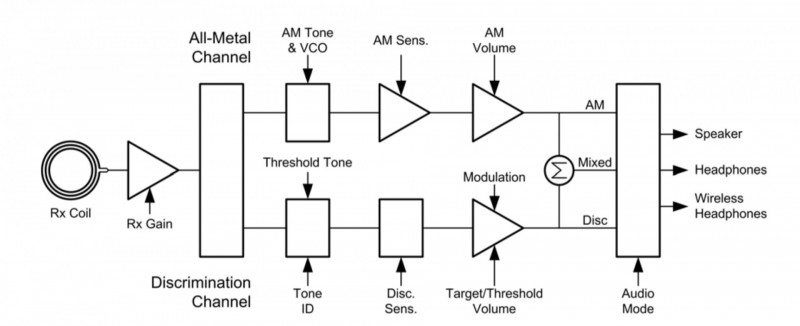-
Posts
19,844 -
Joined
-
Days Won
4
Content Type
Forums
Detector Prospector Home
Detector Database
Downloads
Everything posted by Steve Herschbach
-

Makro Gold Kruzer First Look Video
Steve Herschbach replied to PhaseTech's topic in Nokta / Makro Metal Detectors
“Hello good afternoon guys, I have like you Gold Kruzer, the truth that I am still trying to understand, I have been conducting tests with different metals (currencies of my country of different denominations as well as rings of different metals), burying them to get an idea of what ID the equipment handles in the type of soil of my country, which I observe in the The display of the equipment is that the ID is passed by jumping from one number to another without giving me something stable to know the type of ID of the objective, why is this? It is normal? Is the device set up like this?” The weaker the signal, the more likely the target id will jump around. The target id resolution also matters, the more “target bins”. the more likely it is that the numbers will vary. The consistency of your sweep speed/coil control matters a great deal. This is normal with all detectors. This article may help... -
There is no benefit to doing so on a VLF because they are all voltage regulated internally. A PI detector is a different beast, and in general more power means more depth, and many PI models are not voltage regulated. Too much power can of course blow the circuit. The TDI series is odd in that the early models were more powerful and newer models less powerful. The original TDI Pro used a 16V battery pack but White’s went to 12V with the TDI SL, mostly to allow for use of the existing AA power pack scheme, which avoids shipping issues with the old Li-Ion pack that White’s was using. So some people are boosting the voltage back up to gain that little edge that was lost by the move to 12V.
-

Cloud With A Silver Lining?
Steve Herschbach replied to GB_Amateur's topic in Metal Detecting For Coins & Relics
Storms are what beach hunters live for but no way to know in advance which beaches will benefit. You pretty much need to be there at the time which is why locals have such an advantage. -
Detector center is doing replacement batteries with longer run times for $40. https://www.detectorrepair.com/index.php/store/wm10-wm12-replacement-battery https://www.detectorrepair.com/ Detector Center 188 Oak Shade Road Alum Bank, PA 15521 Phone: 814-283-4270 Email: shop@detectorrepair.com
-
I guess the only way you will get a real answer to your question is to contact the Minelab service center and see if they will sell you one. https://www.detectorrepair.com/ Detector Center 188 Oak Shade Road Alum Bank, PA 15521 Phone: 814-283-4270 Email: shop@detectorrepair.com
-

Open Letter To White’s Electronics’s
Steve Herschbach replied to Ridge Runner's topic in White's Metal Detectors
I like the MX7 and 24K form factor a lot and they are good machines, the 24K especially. To deny the MX Sport intro was a self inflicted disaster is denying reality, but it’s morphed into a decent unit, though I think leaving wireless headphone capability out was a mistake. It should be added as a model refresh. I’d like to see a simplified V3i and TDI both stuck in the MX Sport chassis, though of course with wireless headphone capability added. Be nice if the half sine tech ever saw light of day, but I’m not holding my breath on that. Fingers crossed for a bright future for White’s, I will always have a soft spot for the company. -
I’m sorry to hear you are having problems. Nothing is going on actually. Things fail, that’s why they have warranties. But I see another discussion point to fire up the users and forums in the making. My prototype Equinox is still going strong though the handle is getting eroded from use and my preproduction unit is still going strong even after I ran it over and had to super glue and clamp the distorted pod face back into place. I don’t use my production unit as much because it’s my “pretty” Equinox! I’m not trying to make light of your problems with your units though Scott. That just sucks.
-
Mine will never be out of warranty. I will sell with two months remaining transferable factory warranty, and buy another new unit. Assuming I get half the price of the EQ800 new I will being getting a complete new unit with three more years warranty for $450. Probably less than the cost of a pod/handle assembly, which would be at minimum unit price less price of coil and rod.
-
Ganes Creek, Alaska was mined with floating bucket line dredges and more recently dragline and bulldozer mining. The tailings in that photo are dragline poles that have been flattened out. See my Ganes Creek stories for lots of photos of both types of tailing piles.
-

Collapsible Shaft For Garrett AT Series?
Steve Herschbach replied to Steve Herschbach's topic in Garrett Metal Detectors
Weight is 730 grams or 1.069 lbs. it’s an almost exact copy of the Deus rod so no way it could weigh 3 lbs. -
Welcome to the forum! Rest assured a properly tuned metal detector will “handle” any ground. It simply requires reducing the sensitivity until the detector is stable, and then working within whatever limits that imposes. Gold can be found with most any detector if on good ground and with a skillful operator behind the machine. I am not saying all detectors are equal, but the truth is it’s the operators that vary far more than the detectors themselves. Enjoy!
-

Kind Of One Of Those Best Day Evers
Steve Herschbach replied to Skate's topic in Metal Detecting For Jewelry
You are a good man Skate, thanks for posting your story! -
They were putting a sticker on the end of the box with the version number after the change was made but I am not sure if they are doing that with the latest units coming off the production line or not. Does not really matter I guess, just check and upgrade if needed. Equinox - How To Check Version Or Rollback To Older Version
-
Quite a bit was made of ferrous falsing with the 6" coil a year ago after the upgrade, but nothing much seemed to come of it. I did some limited testing with two Equinox 800 both set up with 6" coils on tiny gold nuggets in bad soil. Short story is I could discern no real difference. There appears to be little downside to going to 1.7.5 from my use so far and with 1.5.0 having the known issue with silver on edge I am going all in with 1.7.5 and not looking back. Thanks for the feedback folks. Equinox - How To Check Version Or Rollback To Older Version Thread asking same question a year ago
-

Simplex / How They Do It ?
Steve Herschbach replied to Ridge Runner's topic in Nokta / Makro Metal Detectors
Dilek is without a doubt one of the most humble and honest persons that I have ever met in my decades in the industry. She does not hype the product but lets it speak for itself, and never badmouths the competition. I have never met her but consider her a friend, and wish her good health and success wherever her path leads her. -
The last “semi-official word” was posted on June 26 here: “the silence is goldenlol, it's a French expression, but I do not know, if it is well translated ...in short, some newsAQ production must "normally" start on July / Augustthere was some change on the machinenew stickera setting mode addand performance in reject modesignificantly improved (result of the first research on Terra)” I think it is safe to say that earlier they were thinking they were close with production expected in July/August. Then an unexpected delay occurred, and there has now been an information clamp down. That does not tell me the machine is imminent, just the opposite. It may get released tomorrow but I for one am not holding my breath. I personally now just figure next year, and that way if it comes earlier it will be a pleasant surprise. Fisher Impulse AQ Data & Specifications
-
It depends on the ground conditions and the target. In air tests I would expect the large coil to do better on coin size targets, and on very small objects I would expect the small coil to do better. For neutral soil you can determine the difference yourself with simple air tests. That is your baseline. As ground mineralization increases the difference between a small coil and large coil changes. Large coils “see” more ground and as the mineralization increases the large coils are more impacted by the mineralization. I have seen ground where large coils have to have the sensitivity reduced so much that I was better off with the small coil even on coin size targets. For tiny targets a small coil is almost always superior. Target/trash density also matters due to target masking, with small coils getting more “apparent depth” by being able to detect shallow targets a large coil misses entirely.
-

Equinox 600 Vs 800 Recovery Speed
Steve Herschbach replied to Edwardakis's topic in Minelab Equinox Forum
The 600 is a great unit and for many the best value by far. I very often just use the presets with a small tweak to sensitivity and therefore am probably going to get a 600 for use as my dedicated saltwater unit plus general backup machine. -

Bigger Coil, More Energy?
Steve Herschbach replied to garikfox's topic in Metal Detector Advice & Comparisons
Most detectors have simplified control sets that combine several controls into one or leave other controls out entirely. The White’s V3i offers more granular control of the detector at every level possible and so it’s manuals are a lesson in how detectors work. One main reason I own a V3i is because we will never see another detector again with this level of control. From the White’s V3i Advanced User Manual: Sensitivity Once you select a basic program you may need to adjust the sensitivity settings. Most of the V3i programs are set up with nominal sensitivities, but some (notably the ‘Pro’ programs) are set up a little hotter. Most users believe sensitivity should be run as high as possible. In some cases this is true, but if you find the detector is noisy and falses a lot you probably need to turn it down. There are three primary sensitivity settings, plus a boost mode. Rx Gain Rx Gain (sometimes called preamp gain) sets the gain of the receiver’s input amplifier. In most cases, you want to set this as high as possible and still maintain stable operation. Three things can limit the maximum gain setting. The first is external noise, such as electro-magnetic interference (EMI) including 50/ 60Hz mains and RF. EMI typically shows up as erratic operation and noisy audio. Secondly, in highly mineralized ground excessive gain can cause the input amplifier to overload or operate at close to overload due to the large ground signal, limiting the available range for target detection. Finally, the quality of the loop null can also push the input amplifier toward overload. White’s V-compatible loops are designed to minimize null limitations, but third-party loops typically have wide variances in the quality of the null which can require a lower Rx Gain. EMI affects the lower end of the signal range, which more directly impacts target sensitivity. Both ground signal and loop null affect the upper end of the signal response range, which usually results in a quicker overload. Ground signal and loop null affect target sensitivity only so far as the Rx Gain must be reduced to prevent overload. All-Metal Sensitivity All-Metal Sensitivity (sometimes called DC sensitivity) determines the responsiveness of the all-metal channel. Only target signals above the threshold cause an all-metal response, and a higher all-metal sensitivity setting will increase the all-metal audio response rate to targets. This setting affects all-metal modes including pinpoint and mixed-mode, but does not affect normal discrimination mode. Setting this too high will make the all-metal audio chatter. Discrimination Sensitivity Discrimination Sensitivity (sometimes called AC sensitivity) determines the responsiveness of the discrimination channel. This is a threshold level, so only target signals above the threshold cause a discrimination response. Setting this too high will cause noise and falsing in the discrimination audio. Tx Boost Tx Boost is transmit boost. When enabled, it triples the transmit voltage applied to the loop (from 10V to 30V) and increases the depth. Using this feature has two major drawbacks: it can overload some loops (reduce the Rx Gain), and it quickly drains the battery. There are two common uses for Tx Boost. One is when hunting an unusually “clean” area where most targets have been cleaned out, and only deep targets remain. TX Boost typically gives about a 1” depth increase. The other is when EMI noise is severe. Reducing the Rx Gain reduces EMI but also reduces target signal strength. Applying Tx Boost increases target signal strength but does not increase EMI noise, so Tx Boost can be used to improve signal-to-noise. -

Bigger Coil, More Energy?
Steve Herschbach replied to garikfox's topic in Metal Detector Advice & Comparisons
Sensitivity controls are almost always simply audio amplification controls on the receiving RX end. TX sensitivity/boost is a separate control. Adding more power can hurt as much as help so it is not a magic solution. However, the main difference I am seeing in modern detector models is they are running at higher transmit power levels out of the box than older models as manufacturers squeeze all the performance possible out of units. Detectors in general now are more powerful but less stable, more noisy than older units. -

Bigger Coil, More Energy?
Steve Herschbach replied to garikfox's topic in Metal Detector Advice & Comparisons
From a technical perspective a metal detector in perfect tune detecting no targets is in a state of electrical balance and uses no power. Different coil sizes are all tuned to reach this “null” state so in theory coil size makes no difference. These are not antennas transmitting power but more like an alternator circuit creating a magnetic field. A conductive item has current induced into it, causing a power drain. The ground itself is a huge target so simply engaging the coil with the ground uses power, and larger coils “see” more ground. So it is the engagement with a detectable target of some sort that uses the power, not so much the coil by itself. A lot of the battery power actually goes to creating an amplified audio signal which is why headphone use can dramatically save battery power. My first post is more the view from a layman user perspective, the above closer to reality, but I admit to not being a detector designer or tech wizard, so somebody else can probably get closer to the true correct technical aspects. Coil Basics by Carl Moreland -

Bigger Coil, More Energy?
Steve Herschbach replied to garikfox's topic in Metal Detector Advice & Comparisons
I guess it depends what you mean by use more power. Certainly resistance varies with different coils. In general the detector puts out a regulated amount of power, and a larger coil disperses that power into a larger but weaker detection field. Small coils pump the same power into a more concentrated, more powerful electromagnetic field. This is why small coils react better to small targets, and why it takes larger gold to set large coils off, but at greater depths. Some detectors allow you to change the transmit power via a control, often labeled TX power. Others may vary that setting via programs or “timings”. Or were you simply asking whether different coils can drain the battery faster? Yes. Though most people will never notice the difference. Coil Basics by Carl Moreland -
I suspect Busho has more experience with ground tracking that you do Chase and has tried all the options suggested. As he has stated multiple times he is not a newbie. He has offered results and a solution that works for him where he is and that other Oz operators will want to pay attention to. Oz soils in general have a different composition than U.S. soils and so comparing results across continents is somewhat like western U.S. operators comparing recovery speed issues to Florida users results. Apples and oranges and will often confuse more than enlighten. I do know ground balancing multiple frequencies presents different issues than ground balancing a single frequency and this may be the root of the problem, especially as regards Oz soils. The Multi-IQ tracking may be deficient by Oz standards... that’s my take away from Busho’s post. Curious Busho... have you tried tracking in single frequency modes? I am only now starting to realize how many people who view posts on the internet tend to grab onto settings of any sort and apply the knowledge as if it’s global in nature when in fact all detector tuning issues are local and differ with the operator and location. A quandary I will have to ponder before posting personal settings going forward.





